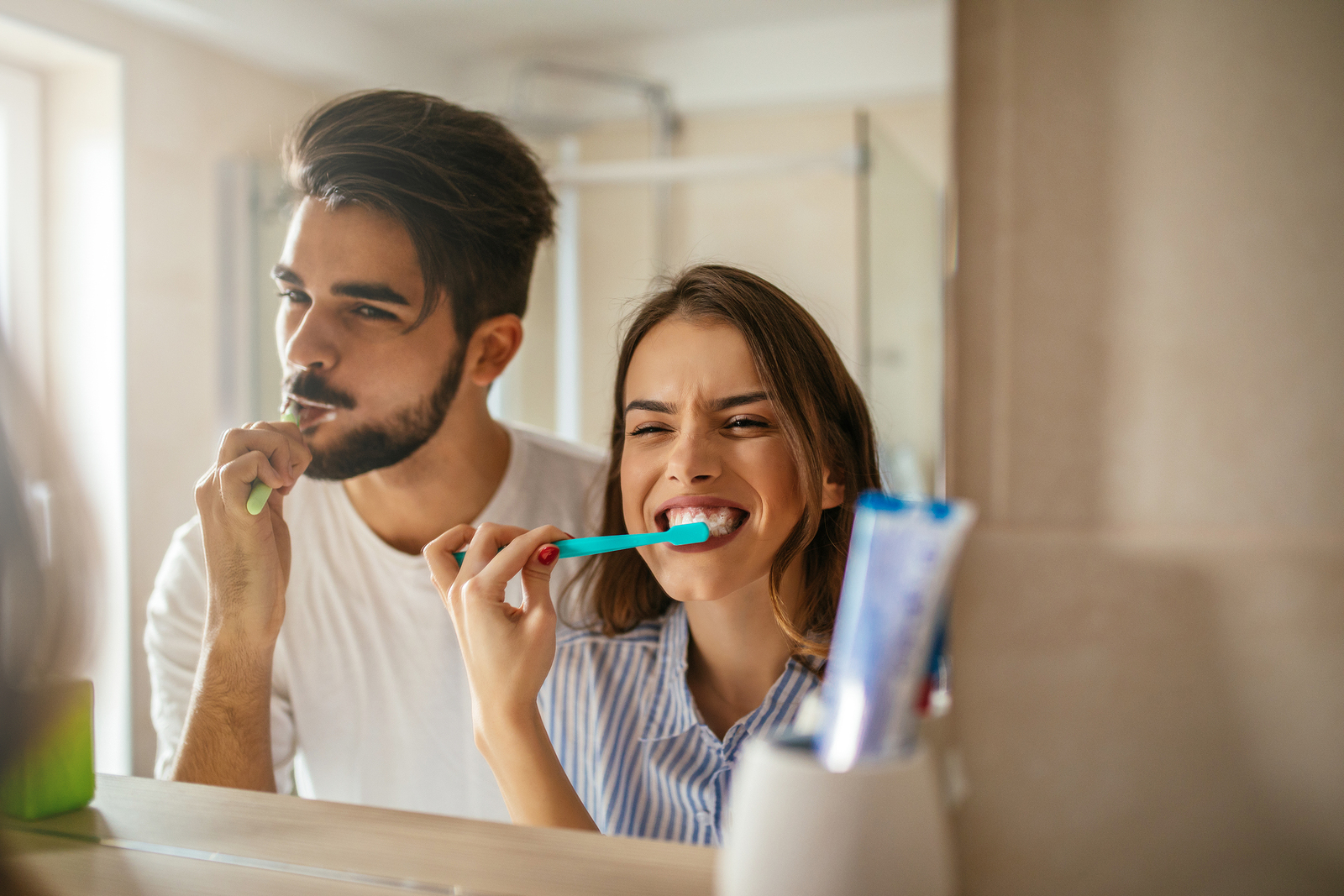Chew your food. Wash your hands. Brush your teeth. Brushing your teeth is one of those habits that is usually ingrained at a very young age, but is your brushing up to snuff? If you don’t brush thoroughly with good technique for the appropriate amount of time per day, aspects of your oral health could still be at risk.
Here are some common brushing mistakes and ways to correct them.
Too Much Pressure. When brushing, it’s best to be gentle, using light to moderate pressure on the surface of the tooth. Using too much pressure or brushing too vigorously can cause the gum line to recede, exposing the root of the tooth. When the root of the tooth is exposed, it more prone to sensitivity and infection. Heavy pressure and intense scrubbing can also wear away at tooth enamel over time.
When you’re brushing, try to remember that you aren’t scrubbing plaque off of your teeth; you’re simply dislodging it to remove it from the surface and the gumline.
The Wrong Brush. Many people have the impression that the more abrasive the bristles, the better the brush will clean. That’s not the case, and hard or firm bristles can damage teeth in the same ways that heavy pressure can. Combine the two, and you’ve got a real problem.
When choosing a brush, go for one with soft bristles, even if you don’t think you have sensitive teeth or gums. Bristles that are able to easily bend during brushing get into the spaces between the teeth and gums, clearing out the harmful bacteria that cause gum disease.
Not Knowing When to Let Go. Many people keep their toothbrush for too long, and an old, dirty brush can inhibit effective cleaning. There are a few guidelines for toothbrush replacement. If the bristles of your toothbrush are bent, curved, or frayed, then it’s time for a new one. Even if there’s no visible damage, brushes should be replaced every three to four months. It’s also best to replace your brush after illnesses to keep germs at bay.
Rushing Things. For brushing to be effective, it can’t be rushed. The American Dental Association (ADA) recommends that people of all ages brush their teeth for two minutes, twice a day. This is longer than the average person brushes their teeth. You can get a better idea of what two minutes of brushing actually feels like by timing yourself with your phone timer or picking a short song to play while you brush.
Poor Technique. Most people aren’t aware of the proper way to brush their teeth, and many techniques out there are damaging or ineffective in the long-term. Repeated horizontal strokes along the gumline can cause irritation. Sweeping, sawing motions cause bristles to bounce over the surface of teeth, neglecting the in-between areas.
The key to effective brushing technique is small, tooth-wide movements. Start by holding your brush at a 45-degree angle to the gumline and moving the brushing back and forth using small gentle movements. This allows the bristles to get in between the teeth, removing plaque and debris. Do this around the mouth, paying attention to all surfaces of the teeth— the fronts, backs, and chewing surfaces.
Before you rinse your brush, be sure to brush your tongue. There are potentially harmful bacteria on there, too!
Stay Consistent. By consistently using the tips and techniques listed here, you can help to improve your dental health and maintain a strong, beautiful smile for a lifetime!
For more blogs by Dr. Freeman click here.

